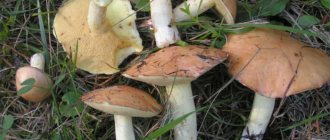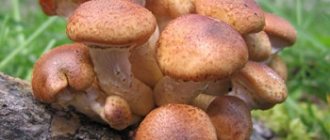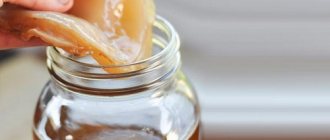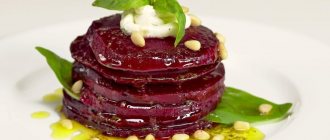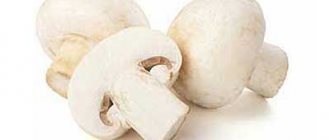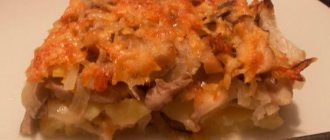Mushrooms
0
1911
Article rating
Kira Stoletova
Despite the dissonant name in Latin, which means “stinking russula,” the valui mushroom is edible. Although, as the name indicates, its consumption is preceded by long-term processing. But salted, pickled mushrooms will become perhaps one of the most delicious appetizers on the table. It is also useful for every mushroom picker to know how not to confuse edible and poisonous mushrooms.
Mushroom Valuy
Description
Young mushrooms have a round, ocher-colored cap that barely peeks out from under the ground, covered with abundant mucus, and glossy in dry weather. Over time, the mushroom rises above the soil on a fragile white or brownish stalk, up to 12 cm high. The stalk is thick in the center, in adult specimens it is loose, with voids, and easily breaks off at the slightest shock.
The cap of the old valuu becomes yellowish-brown or brown and opens, reaching a diameter of 15 cm, later it takes on a prostrate shape and cracks along the edge. If you look closely, you can see thin lines or grooves on the smooth skin, directed from the sunken center to the curved edges. By picking up the loose edge, the skin can be easily removed, which makes cleaning much easier.
The plates are whitish-cream, then yellowish, secrete droplets of clear juice, then dry out in brown spots. The pulp is white, tight, with a burning-bitter taste. The smell is special, reminiscent of celery, sometimes unpleasant, similar to spoiled butter.
It is worth collecting young fruiting bodies whose caps are spherical and have not yet fully opened. After cleaning and soaking, such mushrooms are used for pickles.
General description of the mushroom
Valuy belongs to the group of conditionally edible mushrooms. It can be consumed as food only after careful processing. This is what distinguishes kubar from the usual mushrooms, which can be eaten without fear.
Before cooking, the mushroom must be soaked in clean water for 2-3 days, changing it from time to time. This way you can eliminate the bitter taste of the product. Another rule for experienced mushroom pickers is that only the cap of the mushroom can be eaten, since the stem retains bitterness even after prolonged soaking. Although some gourmets cook them completely.
Before adding to dishes and frying, mushrooms must be thoroughly boiled. Only after such simple manipulations will valui come in very handy on any table, delighting with its extraordinary aroma and taste.
Close relatives of valueu are russula. Even in ancient Rus', there were many recipes based on this amazing mushroom. Therefore, mushroom pickers with extensive experience never disdain them. However, in European countries this mushroom is considered inedible due to its bitter taste. It is noteworthy that despite the bitterness, parasites often live in the stem and cap of the valuuy.
Beneficial properties of serushka mushroom
Other names for value are snotty mushroom, kubar, stinking russula, goby, fist, etc. Such a variety of “names” is associated with the wide distribution of this mushroom. In appearance, valui looks quite appetizing. It has a strong yellow cap. The inside is covered with thin plates that are off-white in color. Valuy is characterized by a rather thick stem. In young fungi it is monolithic, in old ones there is a cavity inside it. When a mushroom is cut, juice is released. Their description is in many ways similar to russula and other representatives of the podgruzka family.
Places of distribution and time of collection
Valui are found in abundance in deciduous or mixed forests of temperate climates - singly or in groups. But most often, the productive species settles in large clearings, forming numerous colonies under birch, oak, and aspen trees. The mycelium also grows, forming mycorrhiza under coniferous trees, usually under pine. Favorite places of growth are wet lowlands, shady, damp corners of the forest.
Another person will not bend over, but will pry the edge of the cap with his foot, pick it off, examine the plates and, making sure that it is not a porcini mushroom in front of him, but a low-value bitter valuu, will pass by. But a real connoisseur will collect a bucket of valuev, pickle it and enjoy the appetizing snack.
The first wave of collection occurs in mid-summer and already from the beginning of July, after generous summer rain, slimy yellow caps can be found. Fruiting ends in late autumn - early or mid-October.
Taste and nutritional value of value
Only mushroom caps are suitable for preparing various dishes. Although the cowberry is inferior in taste to the porcini mushroom or saffron milk cap, it is still considered tasty. Since the flesh of the bull has a bitter taste, it is used in cooking only for pickling and salting.
Cowshed is collected in areas with temperate climatic conditions, in deciduous and mixed forests
Important! Despite the long procedure of soaking the product, preparing valuuy for consumption is worth it, since mushrooms contain many useful components.
Due to the fact that bulls have a low calorie content (100 grams contain 29 calories) and are able to quickly saturate the body, they are classified as dietary products. Like all mushroom cultures, valui saturate the body with a powerful supply of natural protein, which is used in the structure of cells.
Also read: Puffball mushrooms: characteristics of species and medicinal properties
Since valui is 90% water, it does not contain much nutritional value. After heat treatment, the moisture evaporates, leaving only valuable substances. In addition to proteins, the composition includes:
- amino acids;
- a small amount of fat and carbohydrates.
False values and doubles
Valuis are similar to many famous mushrooms - russula, boletus and even white mushrooms. Such confusion is not dangerous and, having sorted it out, you can prepare food from all these types, processing each separately. But the situation becomes much worse, if, due to inexperience, the light-colored caps of valuevs are confused with the yellow fly agaric, which is extremely poisonous, or hebeloma adhesive, which can cause digestive disorders, suffocation and nervous phenomena.
Amanita straw yellow
Amanita straw yellow
The convex caps are small, up to 12 cm in diameter, light yellow or brownish, later becoming flat, the skin is smooth, often with white dots or warts. The leg is tall, up to 15 cm high, cream-colored, tuberously thickened at the base; remains of the vulva can be seen. The cuff is poorly developed, in the form of thin films.
The plates are creamy, sometimes yellowish, and frequent. The pulp is tasteless, loose, with a barely audible radish smell. Grows in coniferous and deciduous-coniferous forests, preferring sandy soils, from late spring to early autumn. The fly agaric is distinguished by its smell, the presence of warts or spots on the cap, a thickened base and the soft structure of the pulp.
Poisoning does not have an immediate effect - it can take up to 48 hours; characteristic symptoms are dizziness, hallucinations, and disruption of the gastrointestinal tract. If you experience any such symptoms, you should immediately consult a doctor.
Gebeloma adhesive (false valui)
Gebeloma adhesive (false valui)
The fruiting bodies are light, with a hemispherical cap, which later becomes flat. The skin is creamy white, sometimes light brown, covered with mucus, then smooth and fibrous. The leg is smooth, up to 8 cm high, hollow, the surface is mealy or covered with scales.
The plates are creamy-yellowish, with a brown tint in older specimens. The pulp is fleshy, creamy or brownish, very bitter with a characteristic strong odor reminiscent of radish or horseradish. It is the pungent odor, as well as the scales on the stalk, that are the distinctive features of this poisonous mushroom.
Hebeloma adhesive grows in meadows and forest clearings under trees of various species, often in large families, forming peculiar rings. You can see these mushrooms from late summer until severe frosts, and sometimes during thaws.
A very poisonous species causes digestive disorders - nausea, vomiting, gas formation, painful colic; nervous phenomena - headaches, weakness, tingling in the fingers. In case of hebeloma poisoning, immediate medical attention is required.
Edible species are distinguished from valuei by the following characteristic features:
- porcini mushrooms and boletus mushrooms have tubes, and value mushrooms have plates;
- almond russula is characterized by the aroma of nuts or bitter almonds;
- Morse's russula has ocher-colored plates with lilac-brown edges, a weak, nutty odor.
White mushrooms
boletus
Russula almond
Russula Morse
Doubles of Valueu
Unfortunately, the edible mushroom has many doubles. But it can be distinguished by the inner surface of the cap. They also look like russula.
Yellow chanterelles: characteristics of edible mushrooms
The most dangerous is considered to be the false valu, which is also called “horseradish”. In the scientific community, this mushroom has another name - hebeloma. This is a poisonous mushroom that belongs to the order of cobwebs. The use of false valuuy is dangerous because it often leads to death due to severe suffocation: the toxin provokes complete paralysis of the muscle fibers that are responsible for the respiratory function.
The false valui differs from the edible one by its characteristic horseradish aroma. However, such an aroma is observed only in freshly cut mushrooms, after which it disappears.
Another difference is the leg. The “horseradish” mushroom contains a large number of small scales on this part. If there is any doubt, it is better not to cut such a mushroom.
Among other things, overripe valui fungi are also considered poisonous . Their structure contains too much milky juice. In addition, they often already contain many worms.
Beneficial features
Although many consider valui to be an unworthy, inedible mushroom, when properly prepared, they are not only tasty, but also healthy. The fruiting bodies contain a lot of protein, which gives them healthy nutritional value and makes them suitable for consumption by people who want to lose weight, as well as during intense physical activity. Proteins are close in composition to meat proteins and include essential amino acids - tyrosine, leucine, arginine.
The presence of vitamins and minerals has a positive effect on metabolic processes, the functioning of hematopoietic organs, and the nervous system. The substance ergothioneine is found in tissues, which has pronounced antioxidant properties, inhibits the development of cancer cells, and has an anti-inflammatory and rejuvenating effect.
Moderate inclusion of mushroom dishes in food will help eliminate cholesterol, normalize blood sugar levels, stabilize blood pressure, relieve fatigue syndrome, and give strength and vigor.
Harm
The valui mushroom belongs to the category of conditionally edible. They contain irritating and bitter-tasting substances that can be removed through prolonged processing. Valui must be soaked in water for three days before use. Moreover, every day the water must be changed several times. But even then they are not suitable for food. You can eat valui by first boiling it and marinating it in vinegar brine.
Does the product contain high levels of saturated fat?
One hundred grams of the finished product contains only one percent fat. This is the thirtieth part of the daily norm. Therefore, it cannot be said that it contains a high content of saturated fats.
Does the product contain high carbohydrate content?
One hundred grams of pickled valui mushrooms contain only 1.1% carbohydrates. This is only 4 kcal, so you can eat the delicacy without affecting your slim figure.
Are there any substances in the product that are considered harmful?
All mushrooms, including valui, contain a special chemical compound called quinine. It is almost completely not absorbed by the body. Therefore, you cannot eat this product in large quantities. In addition, it is worth remembering that the pulp of any mushroom is like a sponge. They absorb well everything that is contained in the air and in the soil on which they grow. Therefore, mushrooms growing near industrial facilities and roads may contain dangerous toxins. In addition, in pickled mushrooms purchased in a store, it is easy to find various preservatives and additives with designations belonging to the Exxx category. Eating such canned food must be done with extreme caution.
Can the product contribute to the development of cancer?
More likely no than yes.
Scientists have recently discovered that valui contains a small percentage of a substance called ergothioneine. It is a strong antioxidant that may help prevent the development of cancer. .
But still, the consumption of these mushrooms should be limited. It is better to eat safer subspecies as a preventative against cancer.
Contraindications for use
Fungal tissues are capable of absorbing not only valuable minerals - manganese, calcium, phosphorus, but also heavy metal salts, as well as toxins, turning into an inedible or even harmful product. When picking mushrooms, you need to make sure that the area is clean and away from industrial enterprises, busy roads and landfills.
Insufficiently soaked or improperly prepared valui can cause discomfort in the stomach, colic, and nausea. People who are susceptible to hypertension, gastritis, hepatitis, pancreatitis or gallbladder dysfunction should not overuse any mushroom dishes.
Recipes for cooking dishes and preparations
Walui (bulls)
Valui, due to its bitterness, requires long soaking or blanching before cooking. It is best to prepare pickles from these mushrooms; in this form they turn out exceptionally tasty, satisfying and healthy.
Soaking and Blanching
For soaking, the peeled fruiting bodies are placed in a wooden or enamel container and filled with fresh, slightly salted water for at least three days. The mass is pressed down on top with a circle and pressure, the water is changed several times a day.
To better remove the bitter taste and preserve the crispy structure, you can acidify the brine, then take 100 g of salt and 20 g of citric acid per 10 liters of water, soak the valui in the same way, changing the brine twice a day.
Blanching is used instead of soaking to speed up preparation. Immerse the mushrooms for 20 minutes in boiling brine prepared at the rate of 100 g of salt per 10 liters of water, then strain and rinse with cold water.
Valui in hot pickling
For 5 kg of mushrooms take: 10 tablespoons of salt, several bay leaves, black and allspice, dill seeds, black currant leaves, and other spices to taste.
Two and a half glasses of water are poured into the container, salt is added and brought to a boil, after which the chopped fruit bodies are immersed, which will soon release juice. As soon as the brine boils, remove the foam, add spices and, stirring, boil for 20 minutes. External signs of readiness are that all the pieces settle to the bottom and the liquid becomes clearer. The workpiece is cooled and placed in jars, filled with brine and closed. The snack is ready in 45–50 days. Store in the basement or in the refrigerator at a temperature not exceeding +6°C.
Valui in sour cream
For 1 kg of mushrooms take: 2 tablespoons of butter, 1 glass of sour cream, 1 small onion, dill, ground black pepper, salt.
Fruit bodies, previously soaked in acidified and salted water, are doused with boiling water and cut into pieces. Place one tablespoon of butter in a container, add mushrooms, salt and simmer under the lid until they absorb the liquid. Then mix everything, add another spoonful of oil, finely chopped onion and, shaking and stirring, fry over medium heat. Once the mushrooms are ready, add sour cream, dill, pepper, salt, bring to a boil and serve.
Description of the appearance of the value
The value mushroom (Russula foetens) from the genus Russula belongs to the Strophariaceae family. Because of its qualities, it received several names: snot mushroom, goby, fetid russula, crying mushroom, undertoppolnik, cowshed, cam.
Edible valui
Small specimens have a cap similar to a ball of varying sizes, the edges of which, curving inward, clasp the stem. Since even at a young age the mushroom can be infected with pests that do not spread beyond the stem, it is recommended to pick it out with a knife. Thus, hollow ball caps are formed that do not contain a wormhole.
The valui mushroom from the Russula genus belongs to the Strophariaceae family
The older the specimen, the straighter the cap becomes. A depression appears in the center . The diameter of the fleshy cap varies in size depending on age. Can reach 18 cm. The color spectrum ranges from a pale yellow palette to dark ocher. The surface is shiny, slimy to the touch, and may crack. Under the cap are brittle plates that change color from white to light brown over the course of their life.
The skin on the cap, presented in the form of a thin plate, is easily separated. With high humidity, droplets of transparent liquid appear on the plates, which gave rise to the name snotty mushroom or crybaby mushroom. When dry, rust stains remain on the records.
The mushroom stem is characterized by a cylindrical or barrel-shaped shape, reaching 12 cm in height and 3.5 cm in diameter. It has several cavities inside. The older the specimen, the looser the inside. The shade of the stem is lighter than the cap. Brown at the base.
Also read: Poddubnik mushroom: appearance, medicinal properties and cooking features
Gallery: value mushroom (25 photos)
When and how to collect value mushroom (video)
False Valuy
The mushroom, classified by mycologists as poisonous, has a specific odor similar to the horseradish plant. Therefore, the false valui was nicknamed the horseradish mushroom.
Despite its similarity with edible valu, it has some significant differences. The hat, which has a diameter of 6–8 cm, is characterized by the presence of a small bulge in the center. Its color is brown or dirty yellow.
The rounded stalk is covered with scales, slightly thickened at the bottom and does not have a ring, characteristic of most poisonous mushroom crops. Its color matches the color of the cap. The white pulp has a bitter taste and unpleasant odor.
False Valuy
